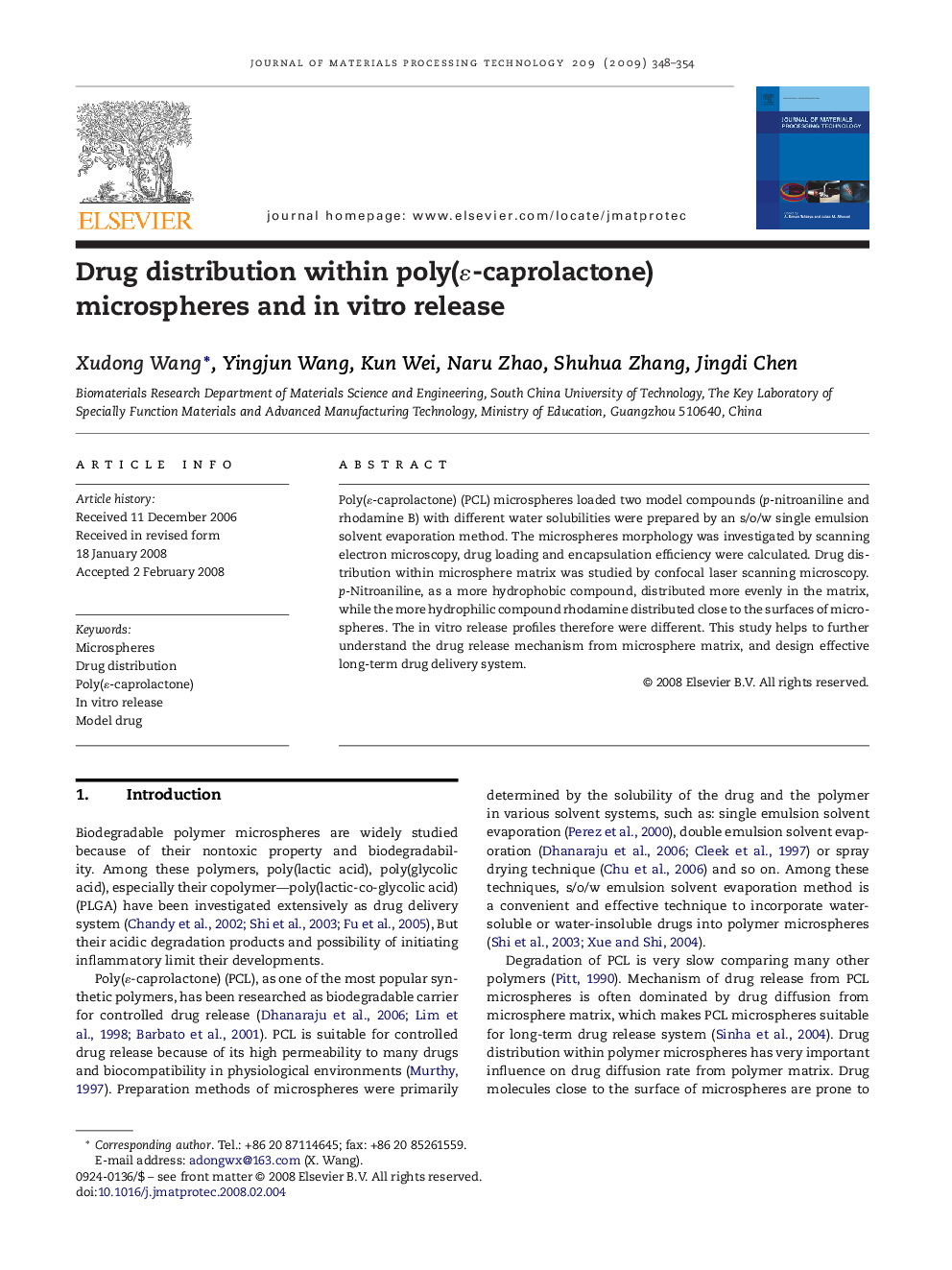| Article ID | Journal | Published Year | Pages | File Type |
|---|---|---|---|---|
| 798660 | Journal of Materials Processing Technology | 2009 | 7 Pages |
Poly(ɛ-caprolactone) (PCL) microspheres loaded two model compounds (p-nitroaniline and rhodamine B) with different water solubilities were prepared by an s/o/w single emulsion solvent evaporation method. The microspheres morphology was investigated by scanning electron microscopy, drug loading and encapsulation efficiency were calculated. Drug distribution within microsphere matrix was studied by confocal laser scanning microscopy. p-Nitroaniline, as a more hydrophobic compound, distributed more evenly in the matrix, while the more hydrophilic compound rhodamine distributed close to the surfaces of microspheres. The in vitro release profiles therefore were different. This study helps to further understand the drug release mechanism from microsphere matrix, and design effective long-term drug delivery system.
